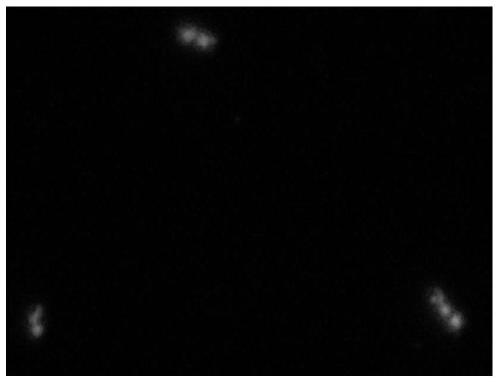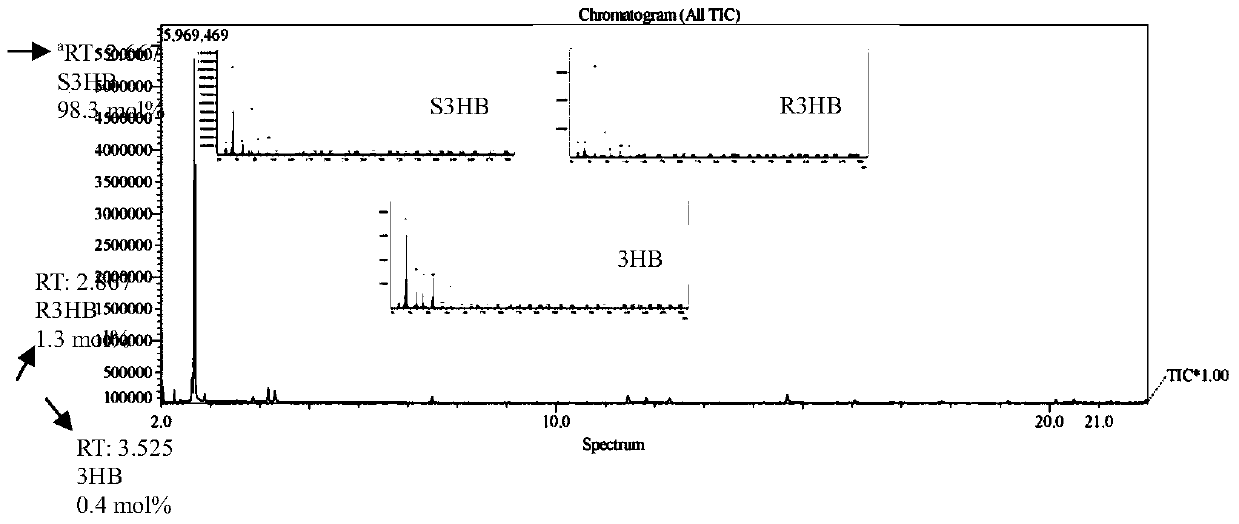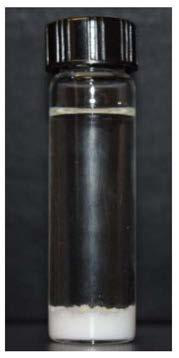A method for synthesizing bioplastic precursor polyhydroxyalkanoate by utilizing lignin-degrading bacteria
A technology of polyhydroxyalkanoate and lignin degrading bacteria is applied in the directions of microorganism-based methods, biochemical equipment and methods, microorganisms, etc., to achieve the effects of simple fermentation conditions and processes, and reduction of carbon sources and pretreatment costs.
- Summary
- Abstract
- Description
- Claims
- Application Information
AI Technical Summary
Problems solved by technology
Method used
Image
Examples
Embodiment 1
[0023] In the L-test tube, add 5 mL of LB medium, insert a single colony of Cupriavidus basilensis B-8 strain, and culture and grow at 30°C and 150 rpm until the optical density of the bacteria at 600 nm reaches 1.0. The pre-culture was centrifuged, washed, and then inoculated into Erlenmeyer flasks containing 100 mL of alkali lignin medium (1-6 g / L) of different concentrations, and cultured with shaking at 30°C and 150 rpm for 48 hours. Among them, the medium preparation method: alkali lignin 1 ~ 6g, (NH 4 ) 2 SO 4 0.28g, K 2 HPO 4 1g, MgSO 4 0.2g, CaCl 2 0.1g, FeSO 4 0.05g, MnSO 4 0.02g, KH 2 PO 4 1g, 15g agar, 1000mL distilled water, pH value is 7.0~7.4.
[0024] Collect a 2 mL sample, discard the supernatant, and resuspend the cells in 150 µL of deionized water and 50 µL of DMSO. Add 5 μL of Nile Red (0.15 mg / mL) to the suspension for staining for 30 min. Then observed with a fluorescence microscope, the results attached figure 1 As shown, it was confir...
PUM
| Property | Measurement | Unit |
|---|---|---|
| optical density | aaaaa | aaaaa |
Abstract
Description
Claims
Application Information
 Login to View More
Login to View More - R&D
- Intellectual Property
- Life Sciences
- Materials
- Tech Scout
- Unparalleled Data Quality
- Higher Quality Content
- 60% Fewer Hallucinations
Browse by: Latest US Patents, China's latest patents, Technical Efficacy Thesaurus, Application Domain, Technology Topic, Popular Technical Reports.
© 2025 PatSnap. All rights reserved.Legal|Privacy policy|Modern Slavery Act Transparency Statement|Sitemap|About US| Contact US: help@patsnap.com



